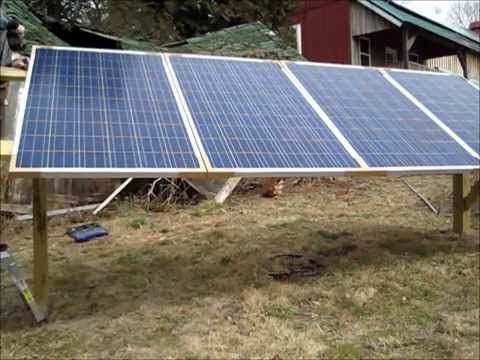Each solar panel kit comes with diy solar panels grid tie inverters and mounting hardware and is customized to your energy needs and home s unique specifications.
Diy solar power system installation.
This will maximize your investment protecting the structure from snow hail rain and wind.
Solar kits eliminate guesswork.
Calculate the watt hour which is equal to the product of power rating of your appliances and time hr of the.
Not a bad investment.
You can cobble together your own system with individual parts but that can be.
Our solar panel kits are easy for you or a contractor to install.
Calculate your load 1.
You can go solar today for about one third of what it would have cost ten years ago.
Parts of a home solar energy system.
Each good diy solar panel kit should contain the necessary racks and mounting structures for the successful mounting securing and tightening of the solar units.
The 5 step process to diy solar panels design and size your system based on energy needs purchase your solar equipment solar panels inverters racking install the racking or mounts for the panels connect the solar panels to your racking equipment install a solar inverter.
But if you want ac power for tools or charging batteries you ll need to spend more than 3 000 for a high end system.
Generate solar power for your home in no time.
Planning a solar array beginner s guide step 1.
Mounting racks range from roof to ground.
The hardest part of starting a project like this is knowing what to buy so.
By opting to go diy solar you can actually cut your costs by more than 12 000 for the average home solar system.
My son and i were able to install the system in a few hours and there have been no maintenance issues other than checking the fluid level in the batteries every few months and.
See the specification chart in your appliances for power rating.
Solar system parts list sponsored links.
Our simple home solar power system is comprised of four basic components.
The solar panels a charge controller two 6 volt golf cart batteries and a small inverter.
Knowing how much power you need is the first step to planning your array.
Decide what appliances light fan tv etc you want to run and how much time hour.





























